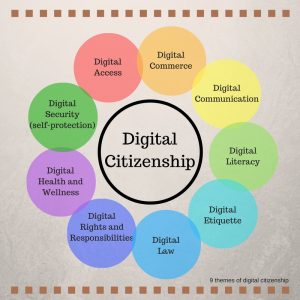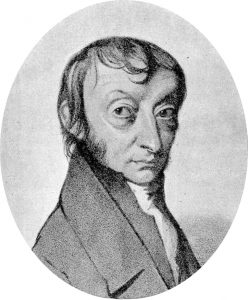Amedeo Avogadro
Amedeo Avogadro was the first scientist to find out that elements could exist in the form of molecules instead of individual atoms. He is mostly known for his hypothesis that different gases with equal volume contain the same number of molecules, therefore they are the same temperature and pressure.
Personal life
Amedeo Avogadro (full name: Count Lorenzo Romano Amedeo Carlo Avogadro) was born in Turin, Italy on August 9th, 1776. His mother was Anna Maria vercellone, a noblewoman of Biella. His father was Count Filippo Avogadro, a highly intelligent lawyer. He was born into a noble family, so he was able to receive a good education. Even though he is mostly known for his scientific law, his education didn’t start with science. Because his father was a very successful lawyer, he was pressured to follow his family tradition and study law. In 1792 he graduated with At age 20 (1796) he was awarded the doctorate degree in canon law, then started to study ecclesiastical law.
Eventually, he lost interest in his legal career and started to study math and physics during 1800. At first, he started his research on electricity, then he became a member of the Academy of Science of Turin at 1804 and a demonstrator position at 1806. At 1803 he wrote a paper with his brother (Felice Avogadro) about his experiment on the electrical behavior of the salt solution, then published it. He became a professor at Royal college of Vercelli for natural philosophy at 1809. In 1820 he became a professor of mathematical physics at the University of Turin.
Even through Avogadro was born into a noble family and is part of a high-class society, he was quietly religious and he believed in hard work. He lived a simple life and married Felicita mazz in 1818, then had 6 sons with her. Avogadro was a simple man and believed that his discoveries were facts, he isolated himself with only his work and didn’t work with other scientists. Avogadro’s work was not accepted until after his death. In 1856 he died in his hometown of Turin, Italy.
His contributions to science
During that time period, the studies for atoms were very limited and often times wrong. With Avogadro’s interest in how the particles of matter behaved and how they came together to form chemical compounds. He studied the work of other scientists (John Dalton and Joseph Gay-Lussac) and found out the mistakes that were made, and corrected them by using his numbers and law.
For example, John Dalton was known for advancing the knowledge of chemistry with his atomic theory, but he made mistakes about the way elements combine to create compounds. He originally thought that water was made up of one hydrogen atom and one oxygen atom, but Avogadro’s law showed the elements can form molecules instead of being an individual atom. Joseph Gay-Lussac observed that when 2 liters of hydrogen reacts with 1 liter of oxygen gas, it forms 2 liters gaseous water. Avogadro’s explanation for Gay-Lussac’s observation was that after the reaction, when all of the hydrogen and oxygen gases have become H20 gas, the volume of gas falls to two-thirds of the starting volume.
Avogadro’s law
In 1811 Avogadro published a paper called Journal de Physique. His paper showed his hypothesis which was that all gases with the same volume, temperature, and pressure have the same number of molecules. After realizing Gay-Lussac mistake and correcting it, he became the first person to find out that elements can be formed as a molecule. Many other scientists like John Dalton believed that only compounds can form molecules.
After studying other scientists Avogadro wrote 4 other papers about the physics of matter, but almost all of them were ignored. 4 years after Avogadro’s death, Stanislao Cannizarro presented it at a conference 1860.
Why was his work ignored?
Many famous and more well known scientist like John Dalton and Jöns Jacob Berzelius disagreed with Avogadro’s theories. He didn’t try to make himself famous or known, by traveling around and spreading his theories. He stayed at Turin, Italy most of his life.
Avogadro’s numbers
6.022×10^23 is the number of particles in a atom or molecules. These number is now one of the most important numbers in science, it has become part of the basic knowledge of chemistry. Avogadro didn’t calculate this number, instead he created by following his hypothesis and work.
“My studies of the natural sciences have particularly involved that part of physics which looks at the atomic world: the properties of molecules, the forces involved in their movement, the heat capacity of different substances, expansion of gas by heat, and the density and pressure of gases.” -Amedeo Avogadro
With his studies with his hypothesis to his numbers, Amedeo Avogadro has made a big impact in with science by using his knowledge to develop the understanding of chemistry.
Sources
Scientists, Top, and List Scientists. “Amedeo Avogadro – Biography, Facts And Pictures.” Famousscientists.org. N. p., 2017. Web. 20 Nov. 2017.
“Amedeo Avogadro | Italian Physicist.” Encyclopedia Britannica. N. p., 2017. Web. 20 Nov. 2017.
“Amedeo Avogadro Conte Di Quaregna Facts, Information, Pictures | Encyclopedia.Com Articles About Amedeo Avogadro Conte Di Quaregna.” Encyclopedia.com. N. p., 2017. Web. 20 Nov. 2017.
Photo
“Amedeo Avogadro.” En.wikipedia.org. N. p., 2017. Web. 20 Nov. 2017.
Is social media necessary?
Nowadays every child, teenager, or even adults have social media accounts, and it can be very useful, but very distracting. Although it is useful for communicating, is it really necessary? These apps distract teenagers to the real world. Studies according to A kaiser family foundation study from The Washington Post has shown that kids between 8-12 years old spend about 6 hours per day and teenagers spend at least 9 hours on average. “Social media is addictive precisely because it gives us something which the real world lacks: it gives us immediacy, direction, and value as an individual.” -David Amerland

Social moment, Toronto by VV nincic via (CC BY 2.0)
Social media causes many problems like lack of verbal communication, cyberbullying, low self-esteem, or depression. Personally, I think a big problem for girls is being insecure of your body and wanting to compare it to others on Instagram or Facebook. Teenagers would want to get more likes on their photos and posts. Researchers at UCLA did an experiment on the brain activity of a teenager when they see a certain amount of likes on their social media page. The research showed that the teenagers were highly influenced by the number of likes the photo had, and a part of the brain that was active was linked to visual attention.
Overall I think teenagers like me shouldn’t be so focused on the media because there is a lot of quality of daily life that can’t be learned by social media. There are also good things about social media like how it can help you meet new people, or help you communicate with friends.

Social-Media-Roadmap 750×280 by Yoel Ben Avraham (CC BY-ND 2.0)
Images caption
All three of these images relate to each other because they change in a way. The butterfly image changed the color of the wings, the weather changes in picture 3 and the birds change in picture 1.
Stay away from bad people in the internet
The internet is can be dangerous. Strangers can use your photos or your name as an advantage for fame. Social media like snapchat or Instagram can show your location, this can lead to people being followed or stalked. Sharing too much personal information is dangerous because people can steal your identity and pretend to be you online.
To avoid strangers stealing your identity, keep your account on private and only accept the friend request of people you know. Keeping your account on private will prevent other users to access your information like your post, captions, or location.
If the account isn’t set up properly then the accounts can be hacked or stolen.
internetSafety ghost by paul Klintworth (CC BY-NC 2.0)
https://www.howtogeek.com/179777/ask-htg-can-people-really-find-me-using-photos-i-post-online/
http://www.ncpc.org/topics/internet-safety/social-networking-safety
Digital citizenship
What is digital citizenship? Digital citizenship is the digital presence you have online. Digital citizenship is both dangerous and useful. Digital citizenship can help people communicate, be social, or give them access to new information. There are many ways for people to communicate online, for example, group chats, comments, or tags. Social media can give people access to new information by following the page, this is convenient for many people because people check social media almost daily. The media can be safe and useful if it is used properly. In every media site, there is specific rules and terms of use. These rules usually are for the safety of the user. Dangerous things can happen on the internet like exposing personal information, leaving harmful words, or copyright. Digital footprint is also left behind, people can search and find things you have posted or personal things about you. Some social sites like Instagram has a private account option to protect accounts from strangers.

3 student handbook
I think that the 3 handbooks are different in ways like PV high having a strict cheating rule and a very specific dress code. I think they have these rules because the students are different. Both the schools are different and similar. Both MAK and KAS value how the students dress, both of them don’t allow spaghetti straps, short shorts, and exposed midriff. One thing all 3 schools have in common is the code of conduct for students at athletic/ extra curricular events, I think this is very important because the schools care about having a good influence and reputation on others. These handbooks are important because it helps students understand what is expected of them .
Valiant Venture blog update
we found simple recipes for a sandwich. And we researched the different kinds of sandwich people can make and the ingredient or material we need. we will start organizing the cookbook and write the instructions.
Drug Abuse
This is a infograph that me and Melody made together. It is about drug abuse and how the drugs affect how people think, act or behave. We also wrote about how people can get help and not be addicted to drugs.
Identity and culture: Where do I belong?


